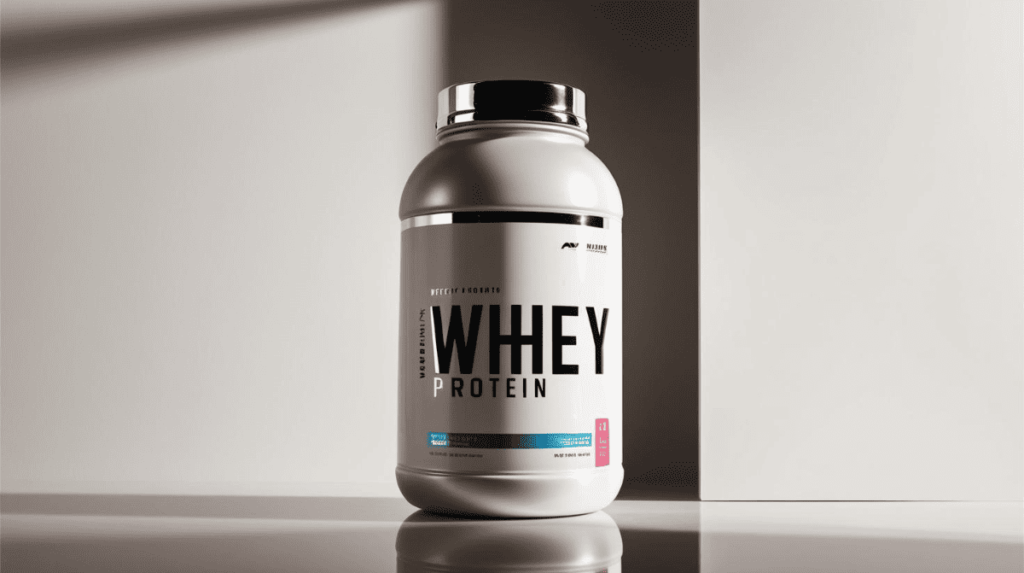Boost Metabolism: Have you ever wondered why some people seem to eat whatever they want without gaining weight, while others constantly struggle with the scale? The answer might lie in metabolism. In this article, I’ll share proven strategies to boost your metabolism in a healthy way, helping you burn calories more efficiently and achieve your health goals.
What is metabolism and why does it matter?

Metabolism is the set of chemical processes that happen in your body to keep you alive and functioning. Simply put, it’s how your body converts food and drinks into energy. A faster metabolism means you burn calories at an accelerated rate, even when you’re at rest.
Before diving into strategies, it’s important to understand that there are healthy and unhealthy ways to boost metabolism. Let’s focus on approaches that benefit your long-term health.
Healthy calorie burning: strategies that work
Strength training: your metabolic ally

Muscle is metabolically more active than fat, which means the more muscle mass you have, the more calories you’ll naturally burn. Strength training at least 2-3 times per week can significantly increase your basal metabolic rate.
“Just 1kg of muscle can burn between 50-100 additional calories per day at rest, while the same weight in fat burns only 4-6 calories,” explains Dr. Melissa Majumdar, spokesperson for the Academy of Nutrition and Dietetics.
HIIT: maximize burning in less time
High-intensity interval training (HIIT) not only burns many calories during exercise but also creates the EPOC effect (excess post-exercise oxygen consumption), which keeps your metabolism elevated for up to 24 hours after your workout.
A study published in the Journal of Obesity showed that just 20 minutes of HIIT three times a week produced significant improvements in participants’ body composition and Boost Metabolism.
Proper hydration: the basic fuel

Drinking enough water is one of the simplest ways to boost your metabolism. Research from the Journal of Clinical Endocrinology and Metabolism demonstrated that drinking 500ml of water increases metabolic rate by up to 30% for approximately one hour.
Try drinking at least 2 liters of water daily – your metabolism will thank you and you will boost metabolism!
Acceleration through mitochondrial promotion: power up your “energy factories”
What are mitochondria and why are they important?

Mitochondria are the “power plants” of your cells, responsible for converting nutrients into ATP, the body’s energy currency. More mitochondria (and more efficient ones) mean better energy metabolism.
Strategies to enhance mitochondrial function
Endurance exercises
Regular aerobic training increases both the number and efficiency of mitochondria. A study published in the Journal of Applied Physiology showed that moderate aerobic exercise increased mitochondrial biogenesis (creation of new mitochondria) by up to 40%.
Intermittent fasting
Intermittent fasting can activate mitophagy – a “cleaning” process that removes damaged mitochondria and stimulates the production of new ones. Starting with a 12-hour fasting period (including sleep) can be a good starting point.
Cold exposure
Controlled cold exposure, such as cold showers or cryotherapy, can stimulate mitochondrial activity, especially in brown adipose tissue, which is metabolically more active.
“Regular cold exposure can increase the number of mitochondria in brown adipose tissue by up to 25%, improving the body’s ability to burn calories,” states Dr. Andrew Huberman, neuroscientist at Stanford University.
Metabolism acceleration with caffeine: nature’s metabolic ally
How caffeine boosts metabolism

Caffeine is a natural stimulant that can temporarily increase your metabolic rate and improve fat oxidation. It works by blocking adenosine, a neurotransmitter that promotes sleep and suppresses the release of adrenaline.
A study published in the American Journal of Clinical Nutrition showed that 100mg of caffeine (approximately one cup of coffee) can increase metabolic rate by 3-11% for several hours.
Healthy sources of caffeine
- Coffee: One cup contains about 95-100mg of caffeine
- Green tea: 25-29mg per cup, plus the benefits of antioxidants called catechins
- Yerba mate: 85mg per cup, rich in nutrients and antioxidants
- Pure cocoa: 12mg per tablespoon, plus magnesium and antioxidants
- Supplements: Caffeine capsules or pre-workout formulas (typically 100-200mg per serving)
Tips for healthy consumption
To maximize the metabolic benefits of caffeine without side effects:
- Limit consumption to 400mg per day (about 4 cups of coffee)
- Avoid consuming caffeine after 2pm to prevent sleep disruption
- Prefer natural sources over sugary energy drinks
- Take occasional breaks from consumption to avoid tolerance
Support with supplements: metabolic enhancers
Some supplements can complement your strategies to boost metabolism. Always consult a healthcare professional before starting any supplementation.
Supplements with scientific evidence
Whey Protein

Whey protein has a high thermic effect, which means your body spends more energy digesting it. Additionally, it helps preserve and build muscle mass, raising your basal metabolism.
“Consuming 20-30g of whey protein after a workout can increase muscle protein synthesis by up to 25%, contributing to a faster metabolism,” explains Dr. Stuart Phillips, sports nutrition researcher at McMaster University.
L-Carnitine
L-carnitine is an amino acid that transports fatty acids to the mitochondria, where they’re used as fuel. Studies show that supplementation with 2-3g daily can improve fat oxidation during exercise and this helps to boost metabolism.
Green Tea Extract Capsules
Rich in EGCG (epigallocatechin gallate) and caffeine, green tea extract can increase energy expenditure by 4-5% and fat oxidation by 10-16%, according to a study published in the American Journal of Clinical Nutrition.
Encapsulated supplements: targeted metabolic support
For those looking for convenient options, encapsulated supplements offer targeted metabolic support. These formulations often combine multiple ingredients designed to work synergistically and boost metabolism.
Popular boost metabolism formulas
Thermogenic complexes
These supplements typically combine ingredients like caffeine, green tea extract, capsaicin (from chili peppers), and black pepper extract to enhance metabolism through multiple pathways simultaneously.
Research published in the International Journal of Obesity found that thermogenic supplements can increase energy expenditure by up to 5-8% when used as directed.
CLA (Conjugated Linoleic Acid)
This fatty acid, available in capsule form, has been shown to help reduce body fat while preserving muscle mass. A meta-analysis in the American Journal of Clinical Nutrition suggested that 3.2g of CLA daily can lead to moderate fat loss over time.
Alpha-lipoic acid (ALA)
ALA is a powerful antioxidant that improves mitochondrial function and glucose metabolism. Studies indicate that 600-1200mg daily may enhance energy production at the cellular level.
Important considerations
When choosing encapsulated supplements:
- Look for third-party tested products with transparent ingredient lists
- Start with the lowest effective dose to assess tolerance
- Cycling supplements (periods of use followed by breaks) may prevent adaptation
- Remember that supplements work best when combined with proper nutrition and exercise
Important precautions
- Supplements should complement, not replace, healthy habits
- Quality matters: choose recognized and certified brands
- Results vary from person to person
- Always consult a doctor or nutritionist before starting any supplementation
Action plan: combining strategies for optimized results
To maximize your boost metabolism results, combine the above strategies into an integrated plan:
- Morning: Start the day with 500ml of water and a cup of green tea or coffee
- Nutrition: Distribute protein across all meals (20-30g per meal)
- Exercise: Combine strength training 3x per week with HIIT 2x per week
- Hydration: Stay hydrated with 2-3 liters of water throughout the day
- Supplementation: Consider whey protein after workouts and L-carnitine before aerobic exercises
- Rest: Prioritize 7-8 hours of quality sleep for hormonal recovery
Remember that consistency is more important than perfection. Small sustainable changes will bring lasting results for your metabolism and overall health.
Ready to transform your metabolism and health? Start implementing one strategy at a time and observe how your body responds. In a few weeks, you’ll likely notice not only physical changes but also more energy and willingness for your daily activities.
Have you tried any of these strategies? Share your experience in the comments!
References
- Acheson, K.J. et al. (2004). “Caffeine and coffee: their influence on metabolic rate and substrate utilization in normal weight and obese individuals.” American Journal of Clinical Nutrition, 33(5), 989-997.
- Dulloo, A.G. et al. (1999). “Efficacy of a green tea extract rich in catechin polyphenols and caffeine in increasing 24-h energy expenditure and fat oxidation in humans.” American Journal of Clinical Nutrition, 70(6), 1040-1045.
- Hood, D.A. (2009). “Mechanisms of exercise-induced mitochondrial biogenesis in skeletal muscle.” Applied Physiology, Nutrition, and Metabolism, 34(3), 465-472.
- Hursel, R. et al. (2011). “The effects of catechin rich teas and caffeine on energy expenditure and fat oxidation: a meta-analysis.” Obesity Reviews, 12(7), e573-e581.
- Majumdar, M. (2021). “Muscle mass and metabolic health.” Academy of Nutrition and Dietetics Position Paper.
- Phillips, S.M. et al. (2016). “The role of milk- and soy-based protein in support of muscle protein synthesis and muscle protein accretion in young and elderly persons.” Journal of the American College of Nutrition, 28(4), 343-354.
- Talanian, J.L. et al. (2007). “Two weeks of high-intensity aerobic interval training increases the capacity for fat oxidation during exercise in women.” Journal of Applied Physiology, 102(4), 1439-1447.
- Villablanca, P.A. et al. (2015). “Nonexercise activity thermogenesis in obesity management.” Mayo Clinic Proceedings, 90(4), 509-519.
- Whigham, L.D. et al. (2007). “Efficacy of conjugated linoleic acid for reducing fat mass: a meta-analysis in humans.” American Journal of Clinical Nutrition, 85(5), 1203-1211.
- Westerterp, K.R. (2004). “Diet induced thermogenesis.” Nutrition & Metabolism, 1(1), 5.
Pingback: The Power of Camellia Sinensis: Nature's Gift for Health and Vitality - Self Care Diaries
Pingback: Chromium - 7 Powerful Benefits - Self Care Diaries
Pingback: L-Carnitine: Unleash Your Metabolic Breakthrough - Self Care Diaries
Comments are closed.